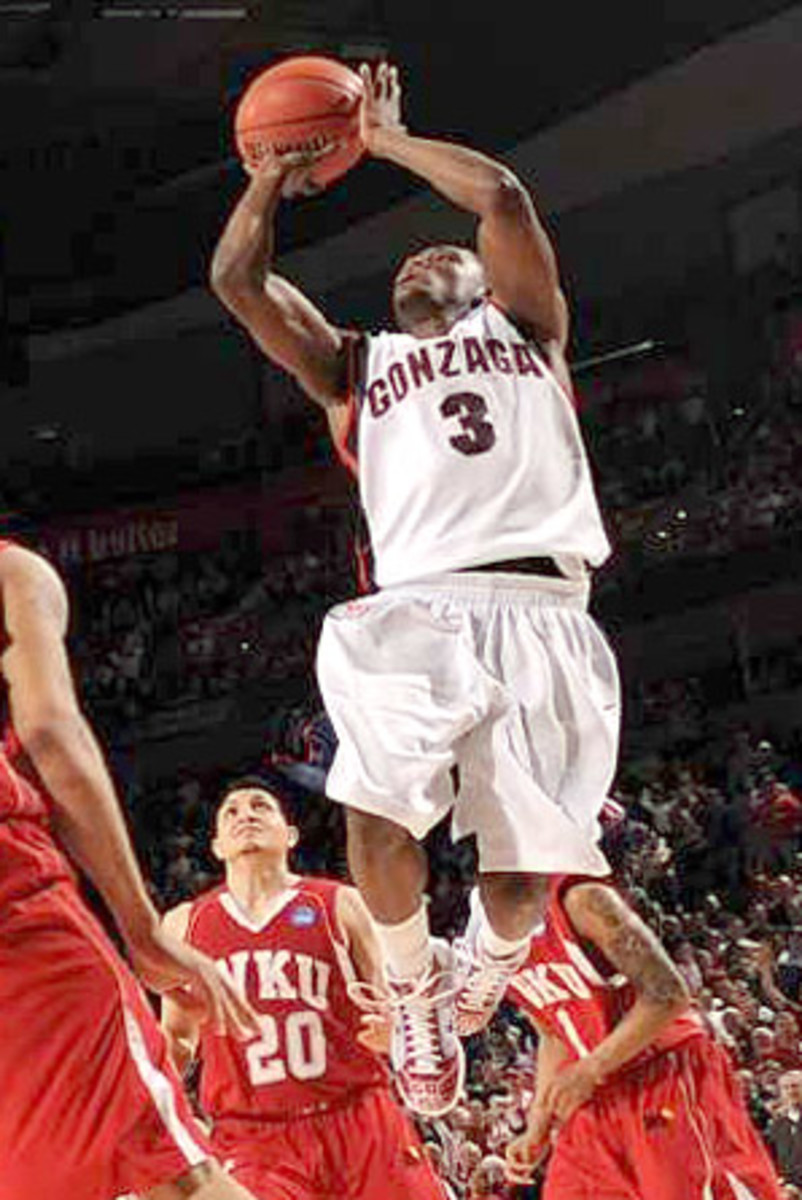Underdogs No More
Some have wondered if this might be coach Mark Few's best team yet. "They say that every year," says Matt Santangelo, a guard on the '99 team. "But I do like this team. They can play with anyone in the country." (A sturdy challenge awaits against top-seeded North Carolina on Friday.)
Gonzaga hasn't made it back to the Elite Eight since '99, but it is still the envy of every mid-major program in the country. The Zags' sustained dominance of the West Coast Conference -- they've won 10 of the last 11 regular-season titles and nine of the last 11 conference tournaments -- only tells part of the story. In a community that has no pro teams to distract it, every home game in cozy, 6,000-seat McCarthey Athletic Center is sold out. Every game is televised regionally, and this year 20 of them were broadcast nationally. The Zags compete with schools like Florida, Arizona and Kansas for players, and they are a fixture in the Top 25. They have a brand-name recognition that is so widespread that last summer IMG made a pitch to handle all the program's multimedia sponsorships. "The players now are rock stars," says Santangelo. "We were not that."
Adds Painter, "They might be in a conference that gets labeled mid-major, but there's nothing about Gonzaga that's mid-major. They schedule high-major, they recruit high-major, and they play like one of the best teams in the country."
The progress hasn't been limited to the basketball team. What was once a small regional school is now a nationally recognized institution that has drawn students from every state in the union. In the last decade 18 new buildings have gone up on campus, the school has raised $240 million, applications are up 143%, enrollment has increased by 62% (to over 7,000) and the average SAT score has gone up 24 points, to 1,176.
"The basketball team has had a good deal to do with it," says school president Robert Spitzer. "It attracts applications and donors, and has done a lot for our academic reputation. Because our reputation is known from athletics, people are starting to recognize our premed program, our law school and other things that have been there all along."
Gonzaga athletic director Mike Roth fields the "How do you do it?" calls from colleagues so often that "I should be a consultant," he says. His response has changed over the years. He used to talk about the importance of scheduling strong opponents and getting on TV, things that are still important. "You need to get your team exposed, you need to do things to attract players," he says.
But now he tends to emphasize the importance of continuity in the coaching staff. Since 1985 the Zags have had just three coaches, and the last two, Monson and current coach Few, were both assistants to the first, Dan Fitzgerald. Three of Few's four assistants have been with him for at least eight years. The administration has made sure to keep Few competitively compensated and in that way preempt what Roth calls the annual Mark Few Sweepstakes, when his coach is mentioned as a candidate for virtually every major Division I vacancy that comes up. "Never say never," Few, 46, says of the lure of greener pastures, "but I'm very happy in Spokane. I have a great staff, a great quality of life, and I get a lot of quality time with my kids. I fly-fish a lot. As long as we continue to grow -- and you have to grow or you'll get passed by -- it's a place I want to be."
Keeping a coach content, even a native of the Northwest like Few, and a program moving forward takes money, and Spitzer, Roth and the school's board of trustees have been zealous about cultivating resources. In the last decade the athletic-development staff has expanded from one person to eight. "The more shovels you have, the more gold you find," says Steve Hertz, a development officer who was the baseball coach for 24 years.
By sticking around, Few enjoys a benefit he imagines his colleagues who bounce from job to job probably miss. "Corey Violette [class of '04] was in my office on Tuesday," says Few. "Blake Stepp ['04] comes by, Ronny Turiaf ['05] has been at about half our games the last few weeks. Seeing players come back and staying in touch with them is the coolest part of my job."
A number of former players live in Spokane. "That's one thing that makes this program so great; everyone comes back," says senior guard Micah Downs, who transferred to Gonzaga after one semester at Kansas and is still the only McDonald's All-American to play for the program. "Sometimes guys like Matt Santangelo, Casey Calvary and Corey Violette will scrimmage with us. They really help us out because they are big and strong and they play really hard."
When they aren't schooling the youngsters, the alums are going at each other. Several former Zags gather most Sundays to play pickup ball at the Warehouse, a basketball court complex owned by one of their tribe, John Stockton ('84). "Mostly we foul each other a lot," says Santangelo, now a financial adviser in town.
Though some might dispute Santangelo's claim that those scrimmages are "the best games in town," the battles are in some ways as important a measure of the program's success as a Final Four appearance or a national title would be. "You're winning conference championships and tournament games, your guys are graduating and having successful lives," says Few. "And they're coming back. It sounds corny, so mom-and-pop, but it doesn't get any better than that."






